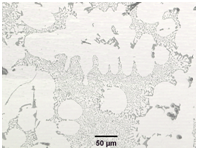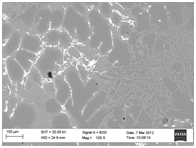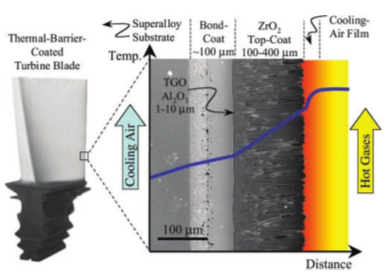On-Going Projects
Interdiffusion in Ti-Al-Nb and Ti-Al-Mo Alloys
Sponsor1. Science and Engineering Research Board, Department of Science and Technology, GoI (Interdiffusion in Ti-Al-Mo)2. IIT Kanpur (Interdiffusion in Ti-Al-Nb)Description:Titanium is one of the most promising lightweight materials for next generation automobiles, having tremendous potentials for weight savings and reduced fuel consumption. Ti-alloys can achieve strengths of as high as steels but at half the weight. However, cost of Ti-alloys is the biggest hurdle in increasing the wide-spread use of Ti-alloys. New methods based on blended elemental (BE) powder metallurgy (PM) are emerging, which use low cost pure Ti-powder for production of Ti-alloy components. In BE PM, the densification as well as alloying occurs by solid state diffusion, which makes the cycle times too slow. Hence, understanding of interdiffusion in Ti-based alloys is of prime importance in order to develop and control the new processes.
We are currently investigating the interdiffusion in Ti-Al-Nb and Ti-Al-Mo ternary alloys with specific emphasis on understanding diffusional interactions and their role in controlling the process kinetics. Effect of electric field on interdiffusion will also be assessed and a fundamental understanding will be developed on the effect of electric field on the basic atomic mechanisms of diffusion. The multicomponent diffusion data will be used to design innovative approaches for production of Ti-alloys based on BE PM.
Microstruture as different stages of BE compacts of Ti-Al processed by Spark Plasma Sintering (SPS)

|
Fig.1: Pure Ti and Al react to form Al3Ti intermetallic |

|
Fig.2: Al3Ti reacts with remaining Ti to form intermediate intermetallics including Ti3Al, Al2Ti and TiAl |

|
Fig.3: Final microstructure of Y-TiAl with porosity caused due to Kirkendall effect and volume changes |
Precipitation Hardening in Cast Al-Alloys
Sponsor: GM Global R&D, Warren, USADescription: Today, cast Al-alloys are being widely used such as in the car-engine applications. However, with ever-increasing demand on operating temperatures and pressure, currently available Al-alloys are reaching their limits. Hence, there is need to develop next generation cast aluminum alloys with enhanced yield and fatigue strength at elevated temperatures. In this project, computational thermodynamics and kinetic studies are used to develop optimized composition and heat treatment schedules to produce high temperature Al-alloys. The experimental studies involve casting, and solutionizing and age hardening heat treatment experiments on cast aluminum alloys with compositions optimized based on thermodynamic modeling. The experimental data on microstructure and mechanical properties is then used in kinetic models to predict the kinetics of the age hardening process.


Thermal Barrier Coatings
Sponsor: GE India Technology CenterDescription: Ni-based superalloys used in aerospace engine applications operate very close to their melting points. Thermal barrier coatings (TBC) are used on Ni-based superalloys to protect the structural alloys from the high engine temperatures. In between the TBC and superalloys, a bond coat (BC) is applied. The TBCs are generally composed of Ytria Stabilized Zirconia (YSZ). However, new TBCs based on zirconia doped with e.g. Lu, Ce, Yb etc. are also emerging. The TBC have to sustain the temperatures and environment of the engine combustion. There they get exposed to various contaminants including sulphur and vanadium. These contaminants cause hot corrosion of the coatings causing their deterioration and spallation. This project is aimed at assessing the thermal stability and hot corrosion behaviors of the TBC systems in various environments. The areas of interest are thermodynamic stability and kinetics of hot corrosion, stability of and interdiffusion across the TBC/BC interface as well as at the BC/superalloy interface.

Source: Nitin Padture et al.; Science; 296; 2002; p. 280
Complete list of the Sponsored Projects
- Interdiffusion and Phase Growth Kinetics in the Fe-Al based alloysSponsor: General Motors Global R&D; Warren, USA (2015-2016)
- Study and Development of Lightweight Forging Process for Automotive ApplicationsSponsor: Automotive Research Association of India (Co-PI: Dr. Shashank Shekhar)
- Kinetics of Microstructure Evolution in Brazing Joints of 0.07C-16Cr-6NiSteel and Silver Obtained with Ag-Cu-Sn Filler MetalSponsor: VSSC, ISRO (2014-2016)
- Investigation of Solute Interdiffusion in Aluminum AlloysSponsor: General Motors Global R&D; Warren, USA (2013-2015)
Website Design by: Nitin Sharma
